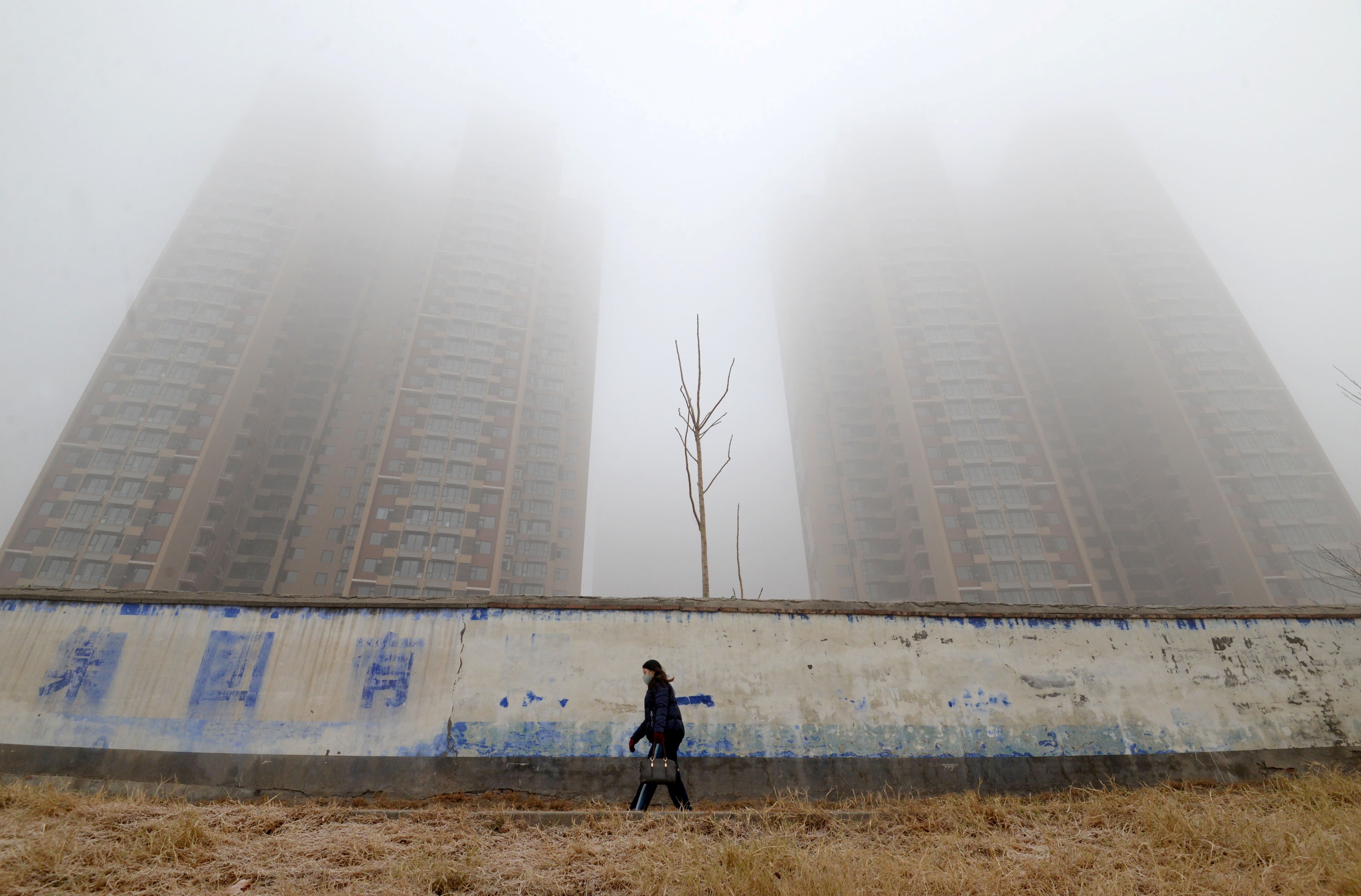
By David Stanway
SHANGHAI (Reuters) – Air pollution in 39 major northern Chinese cities rose 16 percent on the year in January, official data showed, with surging industrial activity making it increasingly unlikely they will meet their winter emissions targets.
Average concentrations of small, hazardous particles known as PM2.5 in two major northern Chinese emissions control zones climbed 16 percent from a year earlier to 114 micrograms per cubic meter, according to Reuters analysis of official pollution data.
China has vowed not to ease up when it comes to fighting pollution even amid an economic slump, but rising emissions of lung-damaging smog last month suggests that some provinces could struggle to balance that goal with an upturn in industrial production.
“The reasons for the increases in PM2.5 levels are not hard to identify,” said Lauri Myllyvirta, energy analyst with environmental group Greenpeace, who noted that steel, thermal power and cement production surged throughout the region in the final quarter of 2018.
“The outsourcing of industrial output that took place last winter in order for Beijing to hit its air quality targets was reversed this winter, driving air pollution levels up in the region while the rest of the country has seen improvements.”
The worst performer over the month was the coal city of Linfen in Shanxi province, which saw average PM2.5 levels of 174 micrograms, up 23 percent from a year earlier. Shijiazhuang, the provincial capital of Hebei, China’s biggest steelmaking region, also saw emissions rise 30 percent to 144 micrograms.
China’s official air quality standard is 35 micrograms, while the World Health Organization recommends an annual average of no more than 10.
Over the three months beginning in November 2018, when coal-fired heating systems are switched on throughout the north, average PM2.5 in the 39 cities reached 93.5 micrograms, up 12 percent on the year.
Anyang, a coal and steel producing city in Henan province, was the worst performer over that period, with average concentrations at 124 micrograms, up 27 percent. Henan has blamed its poor performance this winter on “unfavorable weather conditions”.
China’s environment ministry did not respond to a request for comment. However, senior official Liu Bingjiang told reporters last month that local governments would be held fully accountable for any failures, regardless of the weather.
Most of the cities are aiming to cut pollution by 3 percent compared to 12 months earlier, far lower than last year’s target of around 15 percent. The compliance period also began a month earlier in October, when pollution is normally much lower. However, they are still struggling to meet targets.
“With four months of the October-March period passed and two to go, it would take a very steep 20-percent reduction in February-March to get to the 3-percent reduction target,” said Myllyvirta.
(Reporting by David Stanway; Editing by Joseph Radford)


